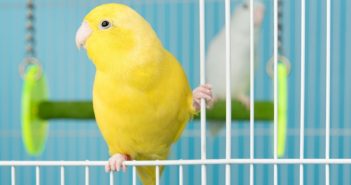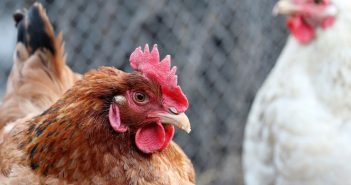February Feeding Goes to the Birds

The month of February is National Wild Bird Feeding month and this year will be the seventh time this has been observed since it was established by the National Bird-Feeding Society in 1999. There is good reason for this observance; the fact that February is one of the most difficult times for wild birds to find food in many areas of the United States and Canada. Winters are harsh, but February is a particularly hard time because much of the food sources have been picked over, and what remains is usually well-coated in snow and ice. While it may seem that a little bird wouldn’t need much to eat, nothing can be further from the truth.
Little birds have very fast metabolisms and must spend most of their waking hours searching for food. Quite often, a small bird must consume up to 20% of his body weight, just in order to keep himself warm through the night. This is also very common amongst our tiny domestic bird; finches can starve to death in a single day if they are neglected food or water. Unlike their domestic cousins, however, wild birds must face sleet, rain and snow storms and still find food.
How Can I Help?
Be consistent, first of all. If you plan on feeding wild birds, ensure that you always have food for them so they don’t have to waste precious time searching empty feeders in hopes of finding food. Keep those feeders full and cleared of snow and ice.
- Offer not only various seeds that attract different birds, but also suet, which is a great source of energy to chickadees, woodpeckers, and other insect-eating birds.
- Ensure your little bird friends have access to fresh water and that they are able to feed in an area that is free from predators such as dogs and cats, or the trauma of noisy children.
- Keep the snow cleaned out around the bottom of your feeder as well, or stomp it down, to help your ground feeding birds. This will draw the attention of jays and mourning doves, allowing more room for the littler birds up in the top of the feeders.
Wild bird feeding is beneficial to the entire family; providing children with a hobby and a learning experience (leave a book of birds and play identifying games by the window nearest bird feeder when they complain of boredom). Adults benefit from wild bird feeders as it?s been found to relieve stress and helps to let one unwind after a long day. Wild birds add beauty to any back yard in brilliant colors and amusing antics. Even your family pets will enjoy watching their wild friends come to visit.



